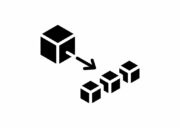
Microservices have revolutionized software development by allowing us to modularize our applications into self-contained, independent services. However, when it comes to picking a language for building microservices, there’s no single best choice. Each language has its own pros and cons, and the best one for you depends on your application’s requirements. In this blog, we’ll explore some of the most popular languages for microservices development, what makes them suitable for this use-case, as well as their drawbacks and best practices.
1. Pros and Cons of Java for Microservices Development
Advantages of Java for Microservices
Java is one of the most popular programming languages in the world and it’s easy to see why it’s a great choice for microservice development. On the plus side, Java has a well-established set of tools that have been developed over the years and are widely used in the industry. It also boasts a huge library of community-developed components that are readily available for use.
Java is designed to deliver high-performance applications. It employs just-in-time (JIT) compilation, which optimizes code execution at runtime, resulting in improved performance. Java also provides excellent support for multithreading and asynchronous programming, allowing developers to build highly concurrent and scalable microservices. This scalability is vital for handling varying workloads and accommodating the dynamic nature of microservices architectures.
Cons of Java for Microservices
On the downside, Java can be complex to learn and debug, making it difficult for beginners to get started with it.
Also, certain use cases or domains might favor languages with domain-specific features. For example, data-intensive microservices or those requiring heavy mathematical computations might benefit from using languages like R or Julia. Similarly, microservices focused on real-time event processing or streaming might be better suited for languages like Scala or Kotlin.
Furthermore, Java’s runtime environment, the Java Virtual Machine (JVM), has traditionally been associated with longer startup times and higher memory consumption compared to some other languages. In microservices architectures that demand rapid scaling and deployment of lightweight services, languages like Go or Node.js are often favored due to their faster startup times and lower resource requirements.
Related video: Get Started To Deploy A Java Microservices Application To A Serverless Framework
Node.js For Microservices: What You Need To Know:
Node.js advantages for microservices
Node.js is an open-source JavaScript runtime environment that enables developers to create fast and efficient server-side applications with ease. It has quickly become one of the most popular options for microservices due to its scalability, speed, and ease of deployment.
Asynchronous and Non-Blocking I/O in Node.js leverages an event-driven, non-blocking I/O model, making it highly efficient for handling concurrent requests and I/O-intensive operations. This design allows handling a large number of connections with minimal resources, making it a good choice for microservices architectures that require high scalability and responsiveness.
Node.js also boasts a lightweight and resource-efficient nature, outshining heavyweight server-side languages like Java or .NET. This makes Node.js an impeccable fit for resource-constrained environments. Whether it’s microservices strutting their stuff on edge devices or cloud platforms looking for cost optimization, Node.js confidently can save the day.
Node.js for microservices: the downsides
Here are some challenges that developers should be aware of when working with Node.js and microservices.
One of the main issues is scalability. Node.js is single-threaded and can only handle one request at a time, making it difficult to scale up services in response to increased demand. This can lead to performance bottlenecks and slow response times if the system is not properly managed or monitored. Additionally, Node.js applications are more prone to memory leaks due to its asynchronous nature, which can further affect performance and scalability over time.
Another potential downside of using Node.js for microservices is security vulnerabilities. Since Node.js applications are written in JavaScript, they are more susceptible to attacks such as cross-site scripting (XSS) or SQL injection attacks than other languages like Java or C#. Furthermore, since microservices are distributed across multiple nodes, it can be difficult to ensure secure communication between them without proper authentication and authorization measures in place.
Finally, deploying Node.js applications can be tricky due to their reliance on external libraries and dependencies which must be installed correctly in order for the application to run properly on production servers. This requires additional effort from developers who must ensure that all necessary packages have been included in the deployment process before releasing an application into production environments.
Working With Python And Microservices – Is It The Right Choice?
Python for Microservices: why choose it
Python is a great choice for developing microservices as it can be smoothly adapted to different environments and platforms, making it easy to deploy applications across multiple devices or services. Additionally, Python is relatively simple to learn and use compared to other languages, which makes it an ideal choice for developers who are new to the world of microservices.
Python also offers a wide range of libraries and frameworks such as Flask, Bottle, Falcom, CherryPy, and more. With these tools at your disposal, you can find most of the tools you’ll need to tackle a microservices project.
Furthermore, Python has excellent support for asynchronous programming which makes it well-suited for building distributed systems such as microservices.
Python for Microservices: the pains
Despite its many advantages, there are some drawbacks to using Python for microservices as well. For instance, the language can be slow compared to other languages such as Java or C++ when dealing with large amounts of data or complex tasks.
Additionally, debugging in Python can be difficult due to its dynamic nature and lack of type-checking during compilation. Finally, the language does not have built-in support for certain features such as concurrency or security which may be necessary in certain cases when working with microservices.
You might also like this video: Writing Async Microservices in Python by Iacopo Spalletti
Loading the player...
Best Practices For Building Microservices:
When building microservices, it’s important to follow a set of best practices to ensure that your application is secure, efficient, and easy to maintain. The most important best practices include:
– Use containers to package and deploy services quickly and securely
– Utilize service discovery tools such as Consul or Kubernetes to manage service dependencies
– Utilize an API gateway such as Kong or Tyk to handle requests efficiently
– Implement automated testing to ensure the stability and security of your application
– Monitor services in real-time to detect issues quickly
– Utilize an event bus such as RabbitMQ or Kafka to enable communication between services
– Use a logging framework such as Logstash or Fluentd to track service performance.
By following these best practices, you can ensure that your microservices are secure, efficient and easy to maintain. This will make it easier for developers to iterate on the code without major disruptions, making development faster and more cost-effective.
Conclusion: Is There Such Thing as a Best Language for Microservices?
When choosing a language for microservice development, it’s important to consider your application requirements and select one that best meets them. While each language has its own pros and cons, popular options include Java, Node.js and Python – all of which are suitable for different use cases. Ultimately, the best language for you will depend on your specific needs and the type of application you’re building.



